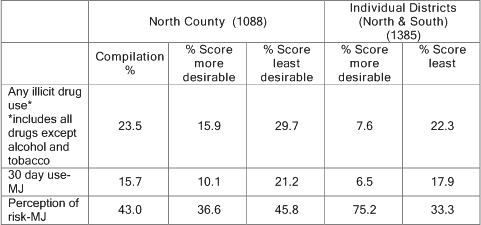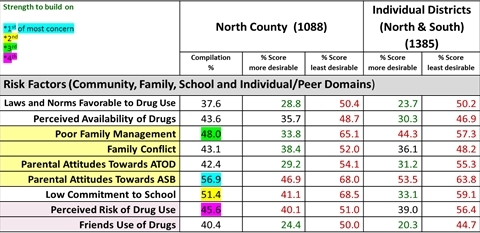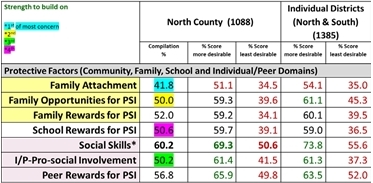Marijuana
- After alcohol, marijuana is the next most commonly used drug by Chautauqua County youth
- By 12th grade more than half (53.2%) of youth have tried it at least once and more than a third (36.9%) are current users (within the past 30 days)
- Current local use rates exceed national rates for lifetime and past 30 day use in grades 8, 10 and 12 (Chaut. Alcoholism & Substance Abuse Council)
- There were noticeable increases in use from grade to grade with rates more than doubling between grades 7 and 8, and double again from grades 10 to 12
- Students reported that their parents would disapprove of their using marijuana, but more than half 57% do not consider it harmful
- The average age of first marijuana use is 13.7 years
- The perception of risk and harm for marijuana use is considerably lower than both tobacco and alcohol
- Efforts to provide accurate awareness information remain a priority
Pharmaceuticals
- Pharmaceuticals are being misused at an increasing rate locally and nationally, with prescription pain killers being most common and often mixed with alcohol (YDS Survey)
- Past 30 day use range from a low of 4.2% in 7th grade to a high of 13% in 11th grade
- Over-the-counter (OTC) cold medicine and caffeine/diet pills and any use of these prescription drugs without a doctor’s order: pain killers, tranquilizers, sedatives and stimulants
Other drugs
-
The 30 day use rate for other drugs among county youth is low with Ecstasy and hallucinogens below 1%, and cocaine use at 1.2% (YDS Survey)
- Inhalant use, more common in younger children due to easy access, peaks at 4.7% in 9th grade and drops to less than 1% in 12th grade
Regarding Other Drugs- low to high ranges can be used to demonstrate community differences and the need for addressing data in communities…

Source: Pride YDS - 2011
Risk and Protective Factors for Positive Youth Development

- Those in the chart are the most common Risk Factors that make up the top four areas of concerns across the districts
- Beliefs, attitudes and behaviors that are favorable towards alcohol and other drug use and abuse have an impact on youth behaviors
- Perception of and actual availability and access to alcohol and other drugs has an impact on youth behaviors
- A focus on the family is imperative and issues within the family domain are predictive of youth problem behaviors
-
Having an accurate understanding of the risks of use is important as well as the understanding that perceived and actual prevalence rates influence youth behavior

- While focusing on the risks, it is equally important to enhance protective factors within the family domain
- Enhancing rewards, or feeling the benefits and recognition, for being involved in positive, healthy activities is a need across the domains
- *Social Skills is not in the top 4, but is the most likely protective factor to be addressed by face-to-face programming ~ whether low and an area of concern or high as strength to build on
Environmental factors
Tobacco smoke:
- The NYSDOH Expanded BRFSS 2008-2009 for Chautauqua provides estimates for smoking policies within the homes of County residents
- In 2009, 74.2% of respondents lived in a home where smoking was not allowed
Lead Poisoning:
- The risk of childhood lead poisoning greatly increases when children live in houses containing lead paint
- While lead paint was banned in 1978, it was rarely used in houses built after 1950 - therefore, houses built prior to 1950 are generally considered suspect in cases of childhood lead poisoning
- Housing structures in the County are relatively old with 45.9% built in 1939 or earlier, compared to 34.8% in New York State
- In Chautauqua County, 53.0% of homes were built prior to 1950, compared to 44.1% in New York State
- As a result, many children in the County are considered at risk for lead poisoning
Air Quality:
- Chautauqua County (13.4) is well above the national benchmark (8.8) or the NYS rate (10.9) for Daily Fine Particulate Matter
- This is a concern because those particles generally pass through the throat and nose and enter the lungs
- Once inhaled, these particles can affect the heart and lungs and cause serious health effects
